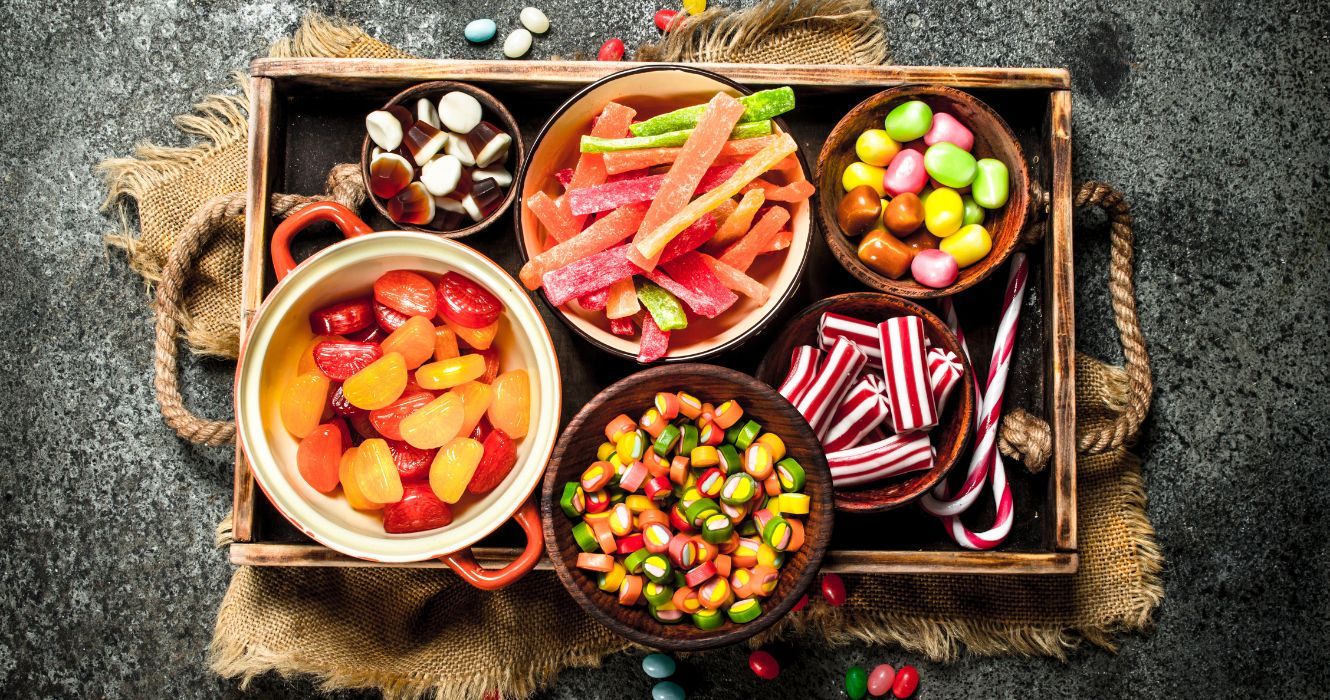I Luv Candi for Beginners
I Luv Candi for Beginners
Blog Article
More About I Luv Candi
Table of ContentsAbout I Luv CandiThe Best Strategy To Use For I Luv CandiSome Known Facts About I Luv Candi.I Luv Candi Can Be Fun For AnyoneThe Ultimate Guide To I Luv Candi
We have actually prepared a great deal of company prepare for this sort of task. Right here are the common client segments. Client Segment Description Preferences Just How to Locate Them Kids Youthful consumers aged 4-12 Vivid sweets, gummy bears, lollipops Companion with local institutions, host kid-friendly events Teenagers Teenagers aged 13-19 Sour sweets, novelty items, fashionable deals with Engage on social media sites, work together with influencers Parents Adults with children Organic and much healthier alternatives, sentimental sweets Offer family-friendly promotions, promote in parenting publications Students Institution of higher learning students Energy-boosting sweets, affordable treats Companion with close-by campuses, promote during examination periods Present Consumers Individuals seeking presents Costs chocolates, present baskets Develop eye-catching displays, provide adjustable gift alternatives In assessing the financial dynamics within our sweet-shop, we have actually located that consumers usually spend.Monitorings suggest that a common client often visits the shop. Certain periods, such as holidays and unique occasions, see a rise in repeat gos to, whereas, throughout off-season months, the frequency may decrease. camel balls candy. Calculating the life time worth of an ordinary consumer at the sweet-shop, we estimate it to be
With these aspects in factor to consider, we can reason that the average profits per customer, over the training course of a year, hovers. The most rewarding clients for a candy store are typically households with young children.
This market often tends to make constant acquisitions, raising the shop's earnings. To target and attract them, the sweet-shop can employ colorful and lively advertising and marketing strategies, such as vivid display screens, memorable promotions, and probably even organizing kid-friendly occasions or workshops. Developing a welcoming and family-friendly ambience within the store can additionally improve the overall experience.
Some Ideas on I Luv Candi You Need To Know
You can also estimate your own revenue by using different assumptions with our monetary prepare for a sweet shop. Average regular monthly income: $2,000 This sort of sweet-shop is commonly a tiny, family-run organization, perhaps known to locals but not attracting great deals of vacationers or passersby. The store could provide an option of usual candies and a couple of homemade treats.
The store does not normally carry uncommon or pricey things, concentrating instead on cost effective treats in order to maintain routine sales. Presuming a typical costs of $5 per customer and around 400 consumers monthly, the regular monthly revenue for this sweet-shop would be around. Average regular monthly income: $20,000 This candy store take advantage of its critical area in a hectic city location, bring in a a great deal of clients trying to find sweet extravagances as they go shopping.
Along with its diverse sweet selection, this shop might also offer relevant items like gift baskets, candy bouquets, and novelty things, providing multiple earnings streams - carobana. The shop's location requires a greater spending plan for rental fee and staffing however leads to greater sales volume. With an estimated ordinary spending of $10 per consumer and about 2,000 consumers per month, this store could generate
An Unbiased View of I Luv Candi
Located in a significant city and vacationer location, it's a big establishment, typically spread out over multiple floors and potentially part of a national or global chain. The store uses an enormous range of sweets, including exclusive and limited-edition products, and product like well-known apparel and devices. It's not just a store; it's a location.
The operational prices for this kind of store are substantial due to the place, dimension, personnel, and features provided. Thinking a typical purchase of $20 per client and around 2,500 clients per month, this flagship shop could accomplish.
Classification Instances of Costs Average Monthly Expense (Range in $) Tips to Decrease Costs Rental Fee and Utilities Store rent, electrical power, water, gas $1,500 - $3,500 Think about a smaller sized location, bargain rental fee, and utilize energy-efficient illumination and appliances. Stock Candy, snacks, product packaging materials $2,000 - $5,000 Optimize inventory administration to decrease waste and track popular items to prevent overstocking.
Advertising And Marketing Printed matter, online ads, promotions $500 - $1,500 Focus on affordable electronic advertising and marketing and make use of social media sites platforms absolutely free promo. da bomb australia. Insurance coverage Business obligation insurance coverage $100 - $300 Search for competitive insurance policy rates and consider bundling policies. Tools and Maintenance Cash money signs up, show racks, repair services $200 - $600 Buy secondhand equipment when possible and execute regular upkeep to extend tools life-span
More About I Luv Candi
Bank Card Handling Charges Charges for processing card settlements $100 - $300 Work out lower handling fees with repayment processors or discover flat-rate choices. Miscellaneous Office supplies, cleansing products $100 - $300 Acquire wholesale and try to find discounts on products. A candy shop comes to be rewarding when its total revenue surpasses its overall fixed prices.

A large, well-located candy store would certainly have a greater breakeven point than a little store that does not require much earnings to cover their expenditures. Curious about the productivity of your sweet shop?
An Unbiased View of I Luv Candi

Economic declines that reduce consumer costs can affect sweet shop sales and profitability, making it crucial for candy stores to handle their costs and adjust to transforming market conditions to remain successful. These risks are often included in the SWOT evaluation for a sweet-shop. Gross margins and net margins are key indications used to gauge the success of a sweet-shop business.
Basically, it's the revenue staying after subtracting expenses directly pertaining to the sweet inventory, such as purchase expenses from suppliers, production expenses (if the candies are homemade), and personnel incomes for those included in production or sales. Net margin, on the other hand, aspects in all the costs the sweet-shop incurs, including indirect prices like management expenditures, advertising and marketing, lease, and tax obligations.
Sweet stores generally have an ordinary gross margin.For circumstances, if your sweet shop gains $15,000 per month, your gross earnings would be about 60% x $15,000 = $9,000. Consider a sweet store that offered 1,000 sweet bars, with each bar priced at $2, making the overall revenue $2,000.
Report this page